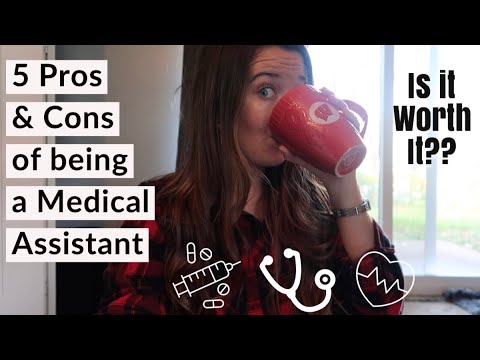Hipaa Guidelines for Medical Assistants
Contents [show]
If you work in the medical field, then you know that HIPAA compliance is extremely important. As a medical assistant, you play a vital role in ensuring that patient confidentiality is maintained. In this blog post, we’ll go over some of the key HIPAA guidelines that you need to be aware of.
Checkout this video:
Introduction
The health insurance Portability and Accountability Act (HIPAA) is a federal law that establishes standards for the protection of personal health information. HIPAA applies to all health care providers, including medical assistants, who have access to patient health information.
As a medical assistant, you play an important role in protecting the confidentiality of patient health information. You will need to be familiar with HIPAA requirements for handling protected health information (PHI). This includes understanding how to use and disclose PHI, as well as how to safeguard PHI from unauthorized access.
The following sections will provide you with an overview of HIPAA requirements and guidelines for medical assistants.
What is HIPAA?
The health insurance Portability and Accountability Act of 1996 (HIPAA) is a Federal law that requires covered entities to maintain the privacy of protected health information (PHI). Covered entities include health plans, health care clearinghouses, and health care providers who conduct certain electronic transactions. Under HIPAA, covered entities are required to have policies and procedures in place to protect the confidentiality, integrity, and availability of PHI. They are also required to provide individuals with notice of their privacy rights and practices.
The History of HIPAA
The health insurance Portability and Accountability Act (HIPAA) was enacted by the U.S. Congress in 1996. The main goals of HIPAA are to make it easier for people to keep their health insurance coverage and to protect the confidentiality of personal health information.
HIPAA includes a set of national standards for the electronic exchange of health information. These standards are known as the HIPAA Transactions and Code Sets, and they specify how personal health information must be formatted when it is exchanged electronically. The HIPAA Transactions and Code Sets standards went into effect in 2002, and compliance with these standards is mandatory for all covered entities.
In addition to the Transactions and Code Sets standards, HIPAA includes a set of privacy rules that protect the confidentiality of personal health information. These rules went into effect in 2003, and they apply to all covered entities.
covered entities include:
-health plans
-health care clearinghouses
-health care providers who conduct certain transactions electronically
The Purpose of HIPAA
The purpose of the health insurance Portability and Accountability Act of 1996 (HIPAA) is to ensure the privacy and security of individually identifiable health information.
All medical assistants must take precautions to protect patient confidentiality in accordance with HIPAA guidelines. These guidelines apply to all forms of patient information, including oral, written, and electronic communications.
When working with patient information, medical assistants should take the following steps to ensure compliance with HIPAA:
-Only disclose information to authorized individuals
-Keep all information secure and confidential
-Destroy or dispose of all patient information appropriately
-Report any incidents of unauthorized disclosure
Who Must Comply with HIPAA?
In general, any entity that is covered by HIPAA must comply with its provisions. This includes most healthcare providers, including doctors, clinics, hospitals, nursing homes, pharmacies, and dentists. Some insurance companies and other entities that handle health information are also subject to HIPAA.
What is Protected Health Information (PHI)?
PHI stands for “protected health information.” It is any information about your health that can be used to identify you. This includes your medical records, lab results, X-rays, and even information about your family’s health history. PHI also includes any information that can be used to billing or insurance purposes.
Most HIPAA-covered entities are required to use unique patient identifiers when creating, storing, or transmitting PHI. These identifiers are designed to protect your privacy by making it more difficult for unauthorized individuals to access your PHI.
How is PHI Used?
The health insurance Portability and Accountability Act (HIPAA) of 1996 is a U.S. federal law that provides data privacy and security regulations for safeguarding medical information.PHI, or protected health information, is any demographic information relating to the past, present, or future physical or mental health or condition of an individual that can be used to identify that person. This information includes, but is not limited to, a person’s name, birth date, Social Security number, home address, telephone number, email address, medical records, and treatment history.
PHI is used by healthcare providers, insurers, employers, and other entities covered by HIPAA to provide treatment and diagnostic services; to obtain payment for those services; to make coverage decisions; to conduct or arrange for clinical research; and for many other administrative purposes.. When using PHI in any of these ways, it is important that only the minimum amount of information needed is used and that it is kept secure to protect patient privacy.
What Are the Safeguards for PHI?
The HIPAA Privacy Rule establishes national standards to protect individuals’ medical records and other personal health information and applies to all forms of protected health information, whether electronic, written, or oral. The Privacy Rule is balanced so that it permits the disclosure of PHI needed for patient care and other important purposes while safeguarding the privacy of PHI.
There are three types of safeguards under the Privacy Rule – administrative, physical, and technical. Administrative safeguards are formal written policies and procedures regarding the use and disclosure of PHI. Physical safeguards are physical measures, policies, and procedures to protect PHI from unauthorized access, destruction, or alteration. Technical safeguards are the technology and security systems used to protect electronic PHI from unauthorized access + destruction.
What Are the Violations of HIPAA?
There are many different ways that a person can violate HIPAA. Some common violations include:
1. Accessing patient information without authorization
2. Sharing patient information with unauthorized individuals
3. Storing patient information in an insecure location
4. Failing to properly dispose of patient information
5. Failing to follow proper security procedures
6. disclosing protected health information (PHI) to unauthorized persons
7. impermissible uses and disclosures of PHI
8. lack of security surrounding ePHI
9. failure to maintain the confidentiality, integrity, and availability of ePHI
How Can You Comply with HIPAA?
As a medical assistant, you are considered a “ covered entity ” under HIPAA. This means that you must take steps to protect the confidentiality of patient information. The health insurance Portability and Accountability Act (HIPAA) is a federal law that gives patients the right to have their medical information kept private. Hipaa applies to all forms of patient information, including written records, x-rays, and even conversation.







